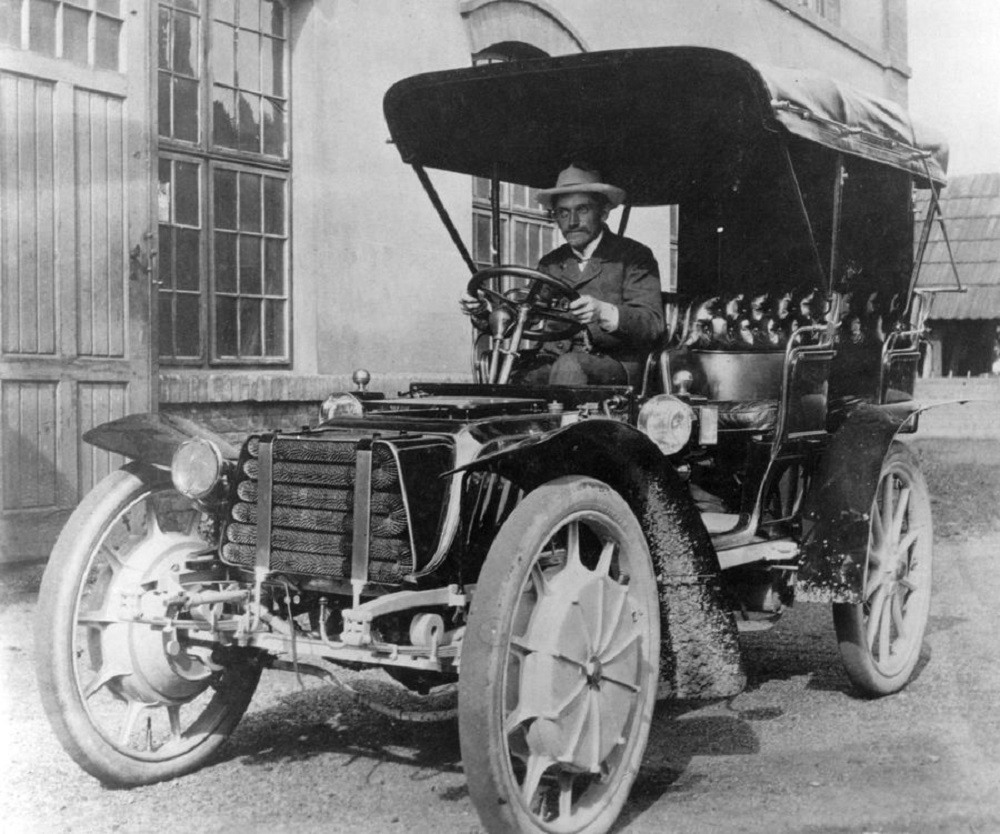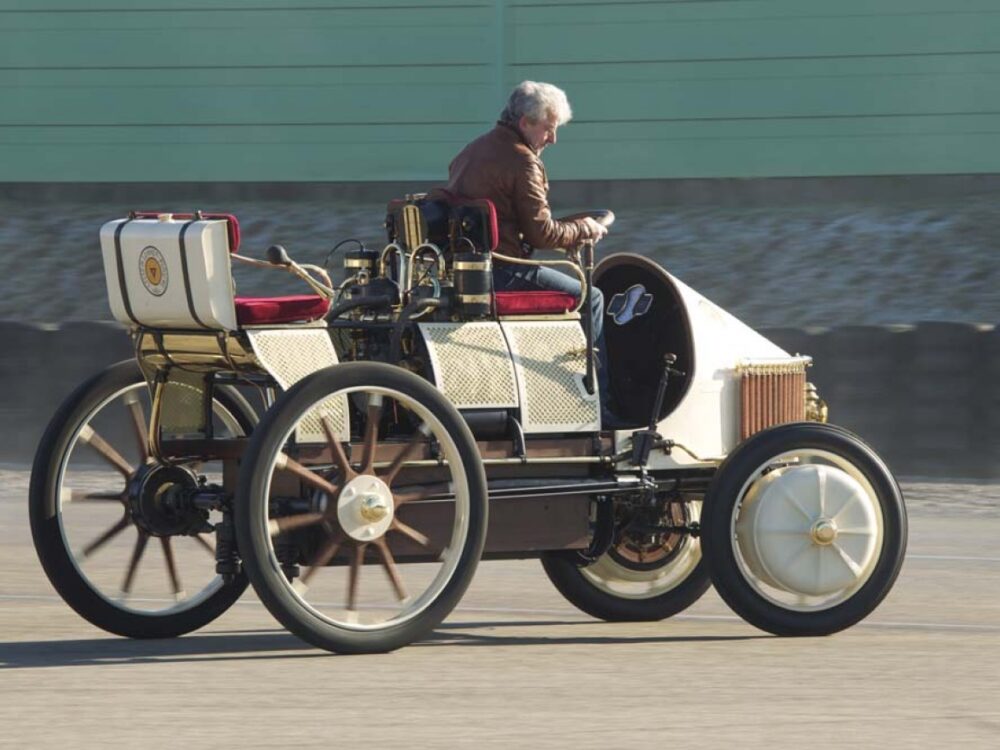The Semper Vivus – Porsche’s First Hybrid Car
A century before Toyota launched the Prius, Ferdinand Porsche pioneered the first gasoline-electric hybrid motorcar.
Most people credit Toyota or Honda for creating the first production hybrid gas-electric car. First produced in 1999, the Toyota Prius and Honda Insight entered the U.S. market when gas was $1.50 a gallon. However, another company built a gas-electric hybrid more than 100 years prior to that. Most of what we know about that company was lost to history. But we do know something about the inventor – a young man named Ferdinand Porsche.
In 1896 Ferdinand Porsche patented the steered-wheel-hub electric motor. Designed as a practical alternative to the mechanical transmission, it adopted the same principles used today – batteries powering an electric drive powertrain. And if those batteries ran out of power, two combustion engines served as range extenders. Like modern battery-electric vehicles, the combustion engines did not power the wheels. Instead, they powered two generators that developed the electricity necessary to continue driving.
Porsche joined Ludwik Lohner & Co. a Vienna-based carriage maker in 1899. The company saw Porsche’s ideas as the key to its success in the car market. The Semper Vivus debuted at the Paris Motor show the following year, causing a sensation. But the weight of the batteries and the combination of two gasoline engines proved impractical. Porsche simplified the design, eliminating one of the engines and adding a shaft to power the generator. Known as the Lohner-Porsche Mixte, with Mixte the French word for “mixed”, the improved car entered production in 1901.
Not long ago, Porsche produced this replica of the Semper Vivus from patent drawings and photos. While the Semper Vivus uses a conventional steering wheel, driving it is completely different from a modern car. Instead of a gas pedal, you have a lateral control lever with six speeds. Starting off, the driver shifts through the speed settings until reaching a top speed of around 22 mph. The car is heavy compared to its modified horse carriage contemporaries, weighing over 2,600 pounds, half of which is over the front wheels. At top speed, the car had an electric range of about 30 miles. After that, the driver manually engaged the gasoline engines to continue driving.
Porsche continued to modify and refine his hybrid design. He entered the Lohner-Porsche Mixte at the Exelburg Hillclimb in 1902 and took first place in the large-car class. The Lohner-Porsche Mixte remained in production until 1915 but sales never caught on. Sold for 14,400 Austrian Krone in 1901, the equivalent of just over $100,000 today, the price doubled by the end of its run.
By then gasoline engines had become the primary source of power for automobiles and other sources including steam and electricity died off. World War I took hold of the European continent and Austria-Hungary focused on producing equipment for its military. Ludwig Lohner went on to found Lohner-Werke, building aircraft for the war effort. As for Ferdinand Porsche, Daimler recruited him as the chief designer. The company later merged with Benz & Cie. becoming Daimler-Benz. Porsche designed several notable race cars for Daimler-Benz before leaving to start his own consulting firm. And it was that firm, Dr. Ing. h.c. F. Porsche GmbH, which eventually became the Porsche AG we know today.
Photos: Porsche AG




